Top 8 World’s Strangest Terraces, Formed Over Millions Of Years
Travertine terraces are some of the most bizarre-looking geological formations on Earth. The rock that makes up these unique formations has been used as a building material since the time of the ancient Romans, and it was even used in the construction of St. Peter's Basilica and Square in Vatican City; however, the most stunning structures this rock produces are perhaps the stepped terraces, one of the most iconic examples of which is located in Pamukkale, Turkey. Apart from this famous Turkish landmark, travertine terraces can be found from Yellowstone National Park in the U.S. to Tuscany, Italy, and almost everywhere in between.
Here are 8 wonders of travertine rice terraces from around the world.
1. Pamukkale
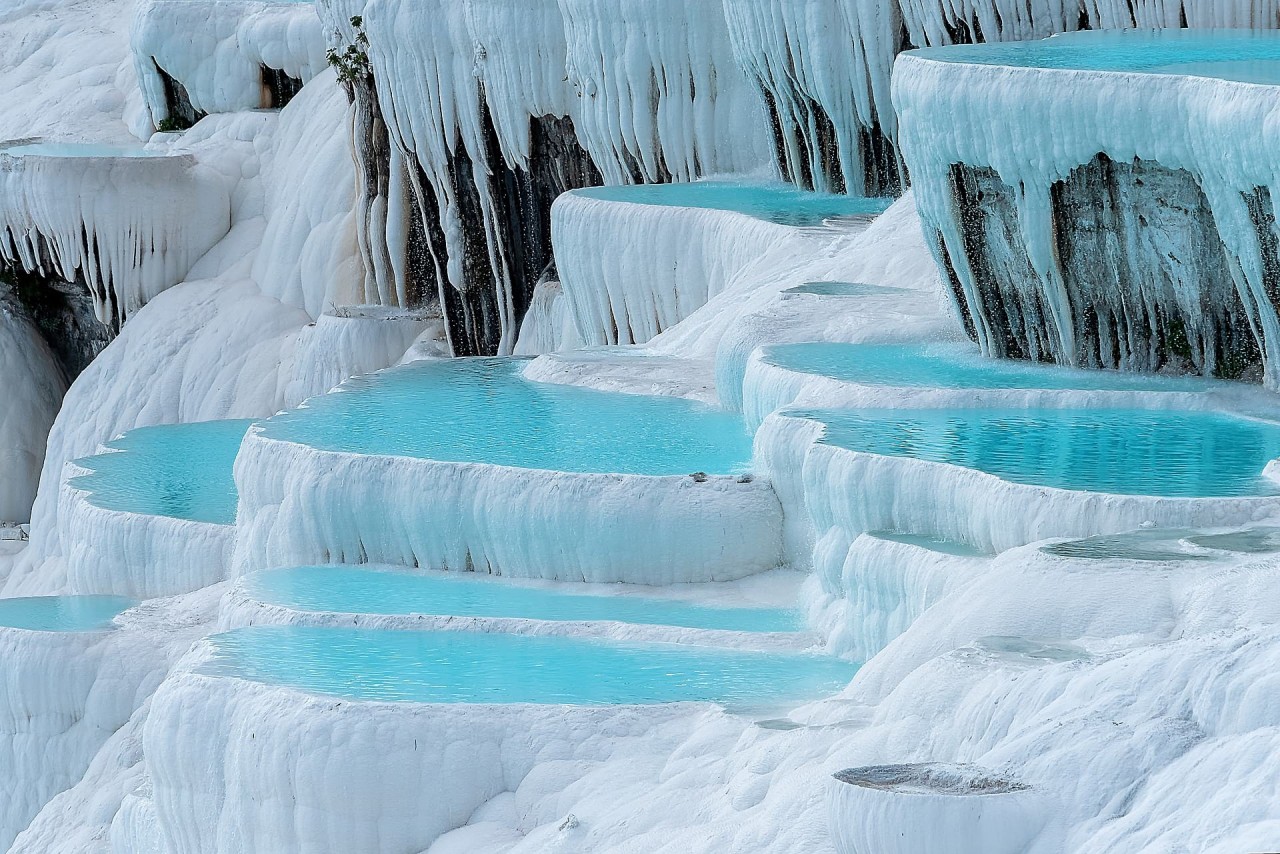 |
| Photo: Trift |
Widely thought to be one of the most beautiful places in the world, Pamukkale is named "cotton castle" in Turkish because it's home to a mountain of fluffy-looking white calcium that people travel from all to see. On one section, the travertine displays as a series of platforms, each topped with milky blue water, cascading about 650 feet. Added with the nearby ancient Greek spa city of Hierapolis to the UNESCO World Heritage list in 1988, Pamukkale contains 17 hot springs that have slowly been causing this photogenic phenomenon with their calcium carbonate deposits for centuries.
People have visited the area for thousands of years, due to the attraction of the thermal pools. As recently as the mid-20th century, hotels were built over the ruins of Hierapolis, causing considerable damage. An approach road was built from the valley over the terraces, and motor bikes were allowed to go up and down the slopes. When the area was declared a UNESCO World Heritage Site, the hotels were demolished and the road removed and replaced with artificial pools. There are well-preserved Roman ruins and a museum on site. A small footpath runs up the mountain face for visitors to use, however the travertine terraces are all off-limits, having suffered damage, erosion and water pollution due to tourism.
2. Huang Long (China)
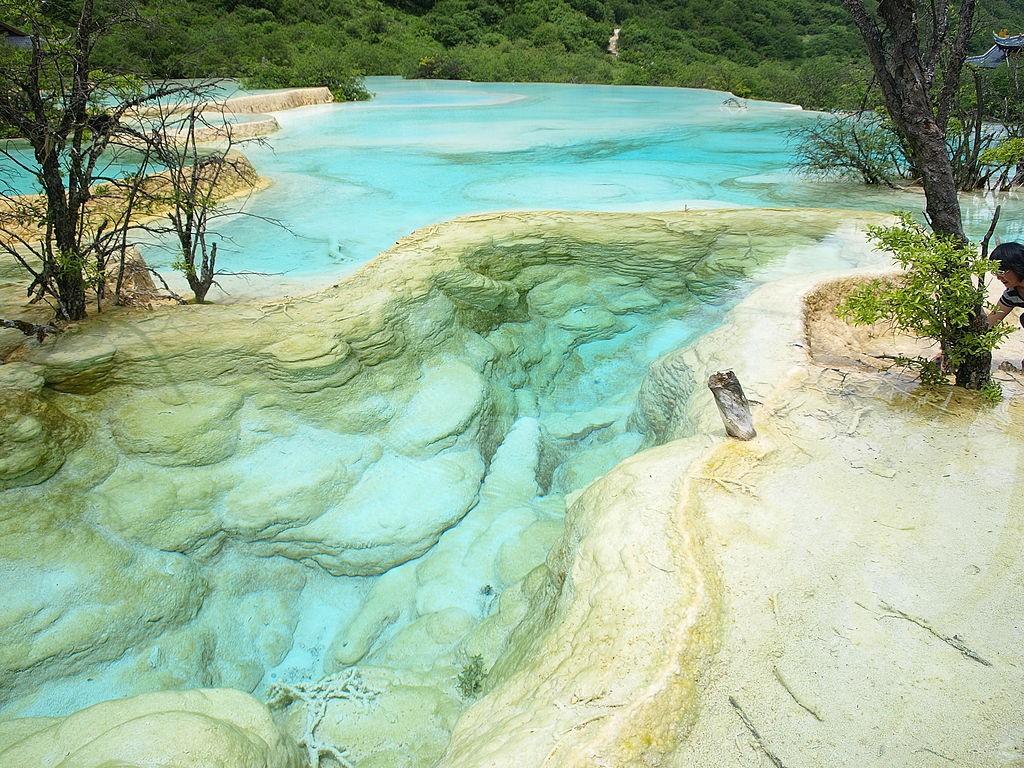 |
| Photo: Wikipedia |
Terraced travertines stretch more than two miles through Huanglong Valley in the northwest of China's Sichaun Province. The multicolored pools—glowing golden and blue-green—cut between the permanently snow-capped Minshan mountains and a dense forest where endangered giant pandas and Sichuan golden snub-nosed monkeys live. The Huanglong travertine terraces are described by UNESCO as "unique in all of Asia," rating "among the three most outstanding examples in the world." An ancient Buddhist temple located right next to the pools adds to their charm.
The dragon as symbol of imperial authority
At the end of his reign, the first legendary Emperor Huang Di was said to have been immortalized into a dragon that resembled his emblem, and ascended to Heaven. Since the Chinese consider Huang Di as their ancestor, they sometimes refer to themselves as "the descendants of the dragon". This legend also contributed towards the use of the Chinese dragon as a symbol of imperial power.
3. Semuc Champey (Guatemala)
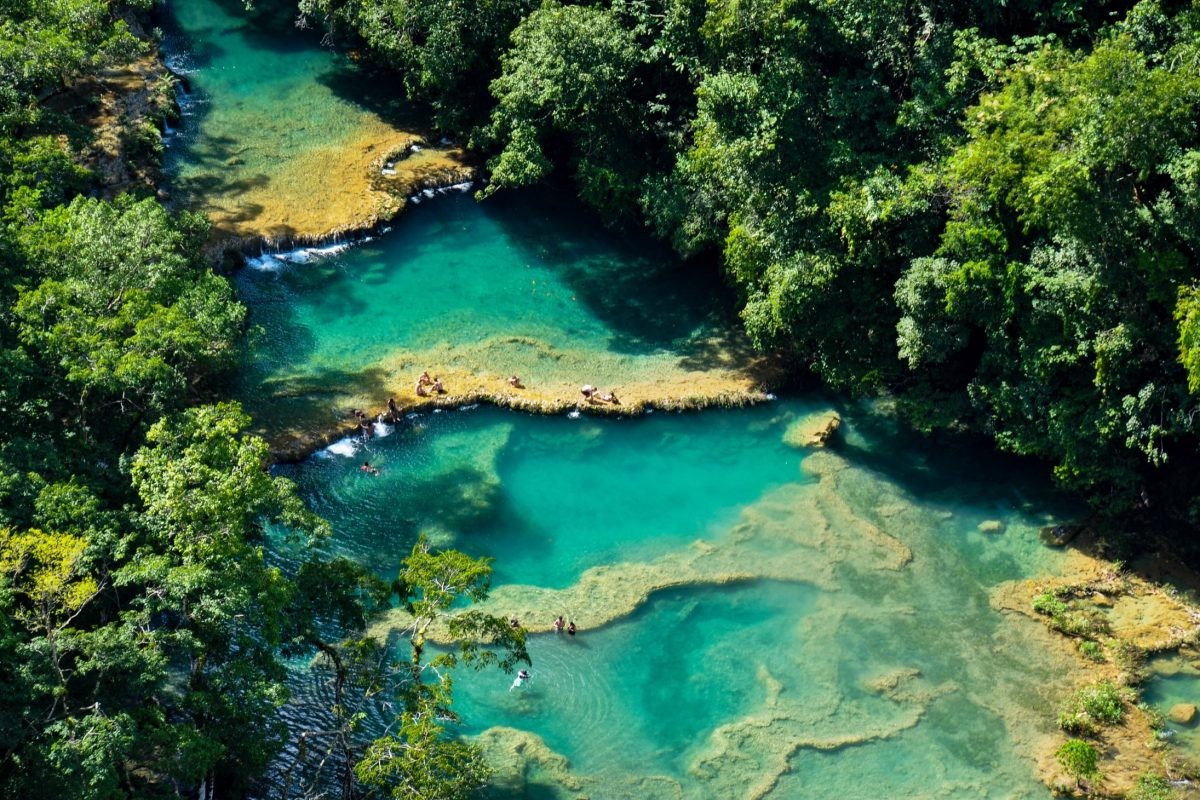 |
| Photo: Journey Latin America |
Tucked away in the lush and mountainous jungle of Alta Verapaz, Guatemala, is a series of six turquoise travertine terraces that stretch over the 122-mile Cahabón River on a 1,000-foot limestone bridge. The words "Semuc Champey" mean "where the river hides under the earth." Somewhat of a giant natural waterpark—and a popular one—Semuc Champey is surrounded by caves and a waterfall visitors can explore by swimming. The idyllic hangout is, however, only accessible by four-wheel drive. Visitors can get a panoramic view of the pools at the El Mirador viewpoint, too, which is at the end of a 45-minute hike.
The site is located far from any large settlement down rough, rock-strewn roads. However the difficulty of getting to this unique natural landscape is rewarded many times over by the sights and experiences awaiting guests upon arrival. Visitors who opt to take the guided tour, which is recommended, will warm up with a rope swing leap into the river — optional, of course — before grabbing a candle and wading through a series of watery caves. The above-ground portion of the tour meanders through the forest before dropping guests at their final activity: a relaxing swim in the limestone pools.
While it is possible to rent a car and drive on your own, the easiest and safest way to get to Semuc Champey is by booking a minibus through a travel agency in one of Guatemala's larger cities. Minibuses will drop you off at Lanquin, the town closest to Semuc Champey and from there you can either walk for about 2.5 hours or take a 4x4 pickup truck "taxi" to the entrance of the falls. Most hotels in and around Lanquin also offer day tours to Semuc Champey.Paths are wet, rocky, and visibility can be limited: sturdy footwear is recommended.
4. Mammoth Hot Springs (Wyoming)
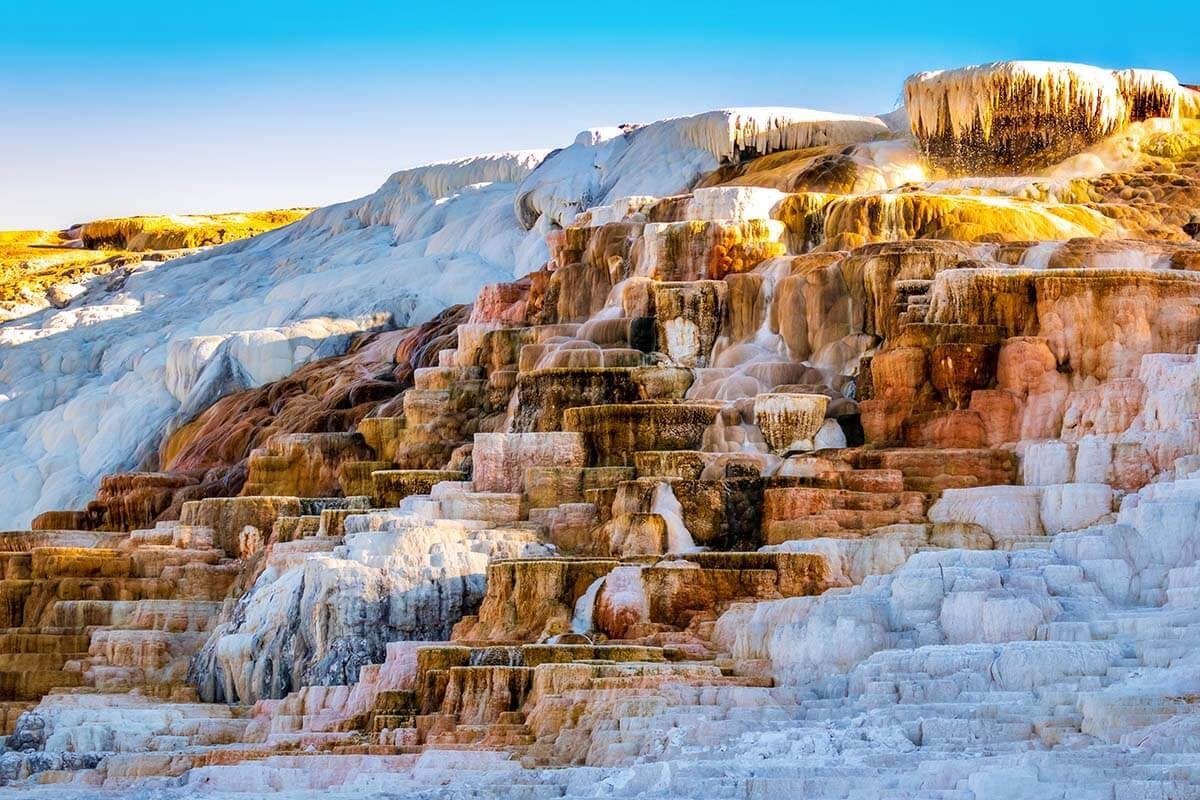 |
| Photo: Full Suitcase |
The most spectacular and famous example of travertine terraces in the U.S. has to be Mammoth Hot Springs in Yellowstone National Park. A dense complex of travertine "terracettes" blanket a hill over a massive magma chamber. They vary in color from bright white to copper and are covered in stalactites and siliceous sinter formations, giving them the look of an inverted cave. With Yellowstone itself being a 3,500-square-mile hotbed of geothermal activity, it's no surprise the recreation area contains these peculiar limestone formations. They can be explored via a 1.75-mile boardwalk.
Thermal activity here is extensive both over time and distance. The thermal flows show much variability with some variations taking place over periods ranging from decades to days. Terrace Mountain at Mammoth Hot Springs is the largest known carbonate-depositing spring in the world. The most famous feature at the springs is the Minerva Terrace, a series of travertine terraces. The terraces have been deposited by the spring over many years but, due to recent minor earthquake activity,[when?] the spring vent has shifted, rendering the terraces dry.
The Mammoth Terraces extend all the way from the hillside, across the Parade Ground, and down to Boiling River. The Mammoth Hotel, as well as all of Fort Yellowstone, is built upon an old terrace formation known as Hotel Terrace. There was some concern when construction began in 1891 on the fort site that the hollow ground would not support the weight of the buildings. Several large sink holes (fenced off) can be seen out on the Parade Ground. This area has been thermally active for several thousand years.
5. Badab-e Surt (Iran)
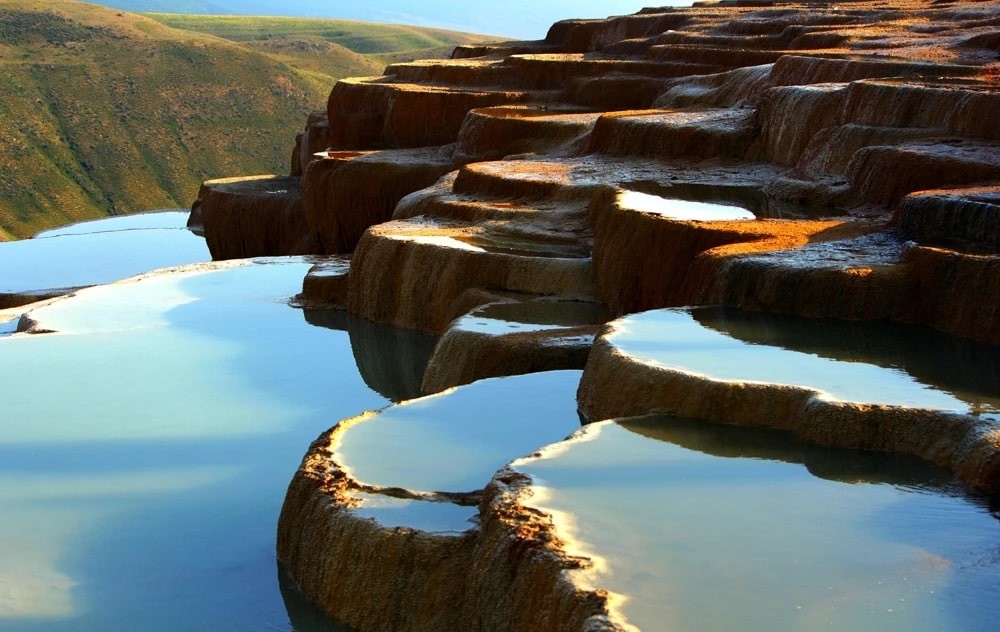 |
| Photo: The Culture Trip |
Formed during the Pleistocene and Pliocene epochs as a result of two hot pools bubbling over a cliffside 6,000 feet above sea level, the geological wonder that is Iran's Badab-e Surt is believed to be the second largest example of stepped travertine terraces in the world, behind Pamukkale. Stacked against a background of rugged mountains, these formations glow fiery red-orange and the water they hold at times looks crystal-clear and sky-reflecting, unlike the cloudy blue and turquoise colors displayed by others.
This site was crafted by nature after two different mineral hot springs spent thousands of years sending water bubbling down the mountain from over 6,000 feet above sea level. When the water cooled, it left behind its carbonate minerals in a jelly-like substance that eventually hardened to give the slope its current staircase shape.
One of the hot springs spews salty water that’s said to have healing properties. Supposedly, it can cure ailments such as rheumatism and certain skin conditions. The other spring spurts a sour sediment full of oxide which gives the water its beautiful orange tint. The place gets its name from a combination of the Persian words for “gassed water” and the old name of the nearest village, which means “intensity.”
6. Bagni San Filippo (Italy)
Amid the famous olive groves and vineyards of Tuscany, there's Bagni San Filippo, a region known for its white calciferous concretions. These travertine terraces are located on the eastern slope of the extinct Monte Amiata volcano, in the hills of the Val d'Orcia, surrounded by the Monte Amiata woods. Its stunning placement is an idyllic setting for a (free) soak in the grotto. The pools are most blue where the hot spring water meets the cold water of the river.
The Terme San Filippo complex includes a Hotel, which preserves the original spirit of its 18th century origins; curative waters; a Wellness Center and a thermal pool with a view over the spectacular Fosso Bianco. All of the complex is set in a beautiful park, complete with a fitness trail and thermal waters gushing forth. Using time-honored knowledge about thermal treatments as a starting point, the spa brings in new water and natural mud-centric wellness practices, as well as massages passed down from both Western and Eastern traditions. The warm waters, rich in sulfur, calcium and magnesium, join with the calm, secluded surroundings to create a refuge for regeneration of body and spirit.
7. Egerszalok (Hungary)
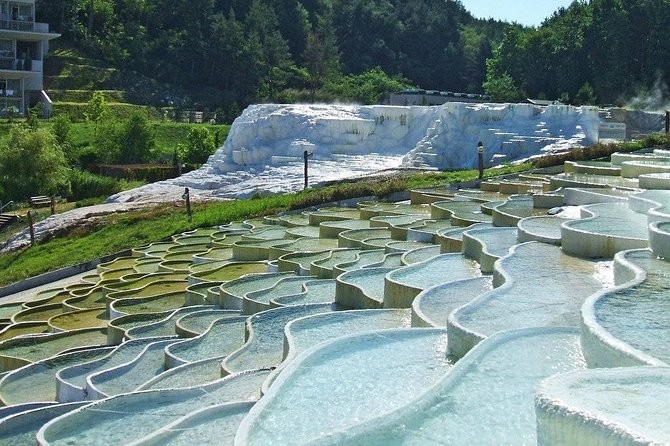 |
| Photo: Viator |
Part open-air spa, part village, Egerszalok is conveniently situated in the historic wine region of Eger, Hungary. It's not only beautiful—imagine orange- and blue-toned white limestone steps spilling gracefully over a grassy hillside—it's also an integral part of Hungarian heritage and culture, as the locals often soak in its pools, treasured for their rumored healing properties. The water at the top of the "salt hill" has bubbled up from more than 1,000 feet underground and is believed to be 27,000 years old.
“Salt Hill” and the accompanying terraces are naturally formed, though scaled-down versions, of the rare salt springs and water terraces found around the world. They were created after water rich with a slurry of calcium, magnesium, sulphur, and traces of other minerals pooled and solidified atop two active hot springs.
In 1992, the water spouting from Salt Hill and the terraces was classified as medicinal. Supposedly, it can alleviate back pain, eczema, degenerative musculoskeletal disorders, and gynecological diseases. Even people who aren’t suffering from any medical conditions like to visit the area.
8. Plitvice National Park (Croatia)
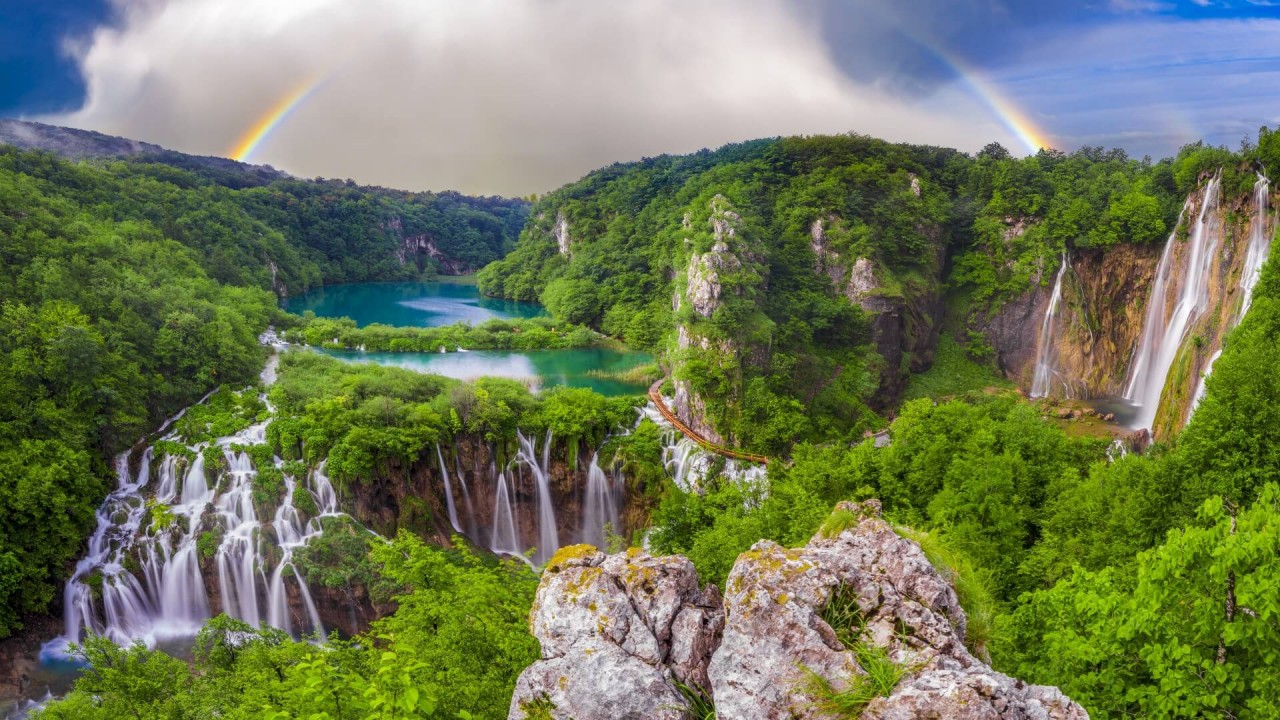 |
| Photo: GetByBus |
In Croatia's Plitvice National Park, 16 cerulean lakes cascade over travertine platforms, creating a breathtaking chain of falling water in the lush and biologically diverse Dinaric Alps. The limestone formed by a buildup of moss, algae, and bacterias has also created ever-growing natural dams that decelerate the water and keep it flowing at a peaceful pace over the steep, vegetation-covered cliffs.
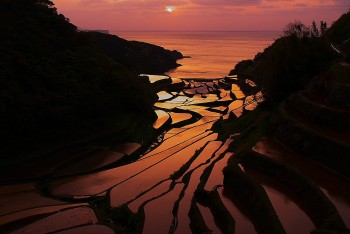 | Vietnam's Rice Terraces Among Asia's Hottest Tourist Attractions Get ready to mark your calendar for a spring visit to the green terraced rice fields in these destinations. |
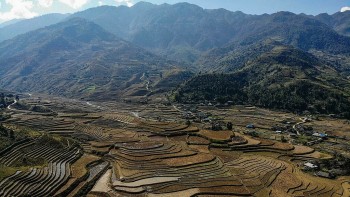 | AFP: Mu Cang Chai’s Spectacular Terrace Ricefields In Vietnam Amaze Tourists AFP news agency has just introduced to the world the sparkling images of Mu Cang Chai terraced fields, Yen Bai, which has been one of ... |
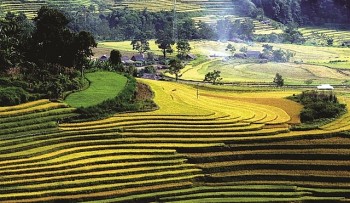 | The Allure of Golden Terraces in Ta Leng Pu Ta Leng mountain is located northwest of Mount Fansipan, Hoang Lien Son mountain range in Lai Chau province. If Fansipan is known as “The ... |
Recommended
 World
World
Thailand Positions Itself As a Global Wellness Destination
 World
World
Indonesia Accelerates Procedures to Join OECD
 World
World
South Korea elects Lee Jae-myung president
 World
World
22nd Shangri-La Dialogue: Japan, Philippines boost defence cooperation
 World
World
Pakistan NCRC report explores emerging child rights issues
 World
World
"India has right to defend herself against terror," says German Foreign Minister, endorses Op Sindoor
 World
World
‘We stand with India’: Japan, UAE back New Delhi over its global outreach against terror
 World
World


